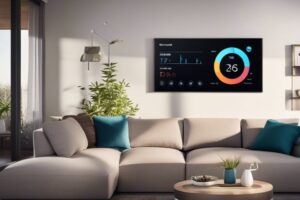Embark on the journey to elevate your home entertainment experience by setting up a smart home audio system with multi-room playback. With this comprehensive guide, you will learn how to seamlessly integrate various speakers and audio devices throughout your home, allowing you to enjoy high-quality sound in every room. From choosing the right equipment to configuring your system for optimal performance, you will be empowered to create the ultimate audio setup that suits your needs and preferences.
Key Takeaways:
- Choose the right wireless speakers: Ensure that the speakers are compatible with multi-room playback and can be easily connected to the smart home audio system.
- Invest in a reliable multi-room audio system: Look for a system that offers seamless connectivity, easy setup, and the ability to control different speakers in various rooms from a single source.
- Consider the audio source: Ensure that your chosen multi-room audio system can support a variety of audio sources such as streaming services, Bluetooth, and wired connections for maximum flexibility.
- Plan the placement of speakers: Strategically place the speakers in different rooms to ensure optimal sound distribution while considering factors such as acoustics and room layout.
- Set up the system correctly: Follow the manufacturer’s instructions carefully to ensure that the smart home audio system is set up correctly for multi-room playback, and take advantage of any available apps or software for easy control.
“`html
Understanding Your Needs
Before diving into the setup of your smart home audio system with multi-room playback, it’s essential to understand your specific needs and requirements. This will help you make informed decisions on which components and features to prioritise as you build your system.
Assessing Your Space
When setting up a smart home audio system, the first step is to assess the layout and size of your living space. Consider the number of rooms you want to be included in your multi-room playback system and the layout of each room. This will help you determine the number of speakers and their placement for optimal sound distribution throughout your home. Additionally, take note of any potential obstacles or interference that may affect the performance of your audio system.
Deciding on Audio Quality vs. Budget
When it comes to setting up a smart home audio system, one of the key decisions you’ll need to make is finding the right balance between audio quality and your budget. While high-end speaker systems offer unparalleled sound quality, they often come with a hefty price tag. On the other hand, more budget-friendly options may sacrifice some audio fidelity but can still provide an enjoyable listening experience. Consider your specific audio preferences and budget constraints when making this decision.
“`
Choosing Your Equipment
When setting up a smart home audio system with multi-room playback, it is crucial to choose the right equipment to ensure seamless integration and high-quality sound throughout your home. This chapter will guide you through the essential factors to consider when selecting speakers and the importance of the hub, smart home controllers, and connectivity options.
Factors to Consider When Selecting Speakers
When selecting speakers for your smart home audio system, there are several factors you should consider to ensure the best audio experience. The size and layout of your rooms will play a crucial role in determining the type and number of speakers you need. Speaker power and frequency response are also important, as they will determine the quality of sound produced. Additionally, consider whether you want wireless or wired speakers, and whether you prefer omnidirectional or directional speakers. Recognizing these factors will help you choose speakers that will deliver the best audio experience for your multi-room setup.
The Hub: Smart Home Controllers and Connectivity Options
The hub is a vital component of your smart home audio system, as it serves as the central point for controlling and connecting all your audio devices. Smart home controllers such as Amazon Echo, Google Home, or Apple HomePod can act as the hub for your system, providing voice control and seamless connectivity with other smart home devices. It is crucial to consider the compatibility of your chosen hub with your speakers and other smart home devices. Additionally, examine the connectivity options offered by the hub, such as Bluetooth, Wi-Fi, or Ethernet, to ensure a stable connection and smooth multi-room playback.
Installation and Setup
Setting up a smart home audio system with multi-room playback may seem like a daunting task, but with the right guidance, it can be a straightforward process. In this section, we will walk you through the installation and setup process, providing you with valuable insights to ensure everything runs smoothly.
Step-by-Step Installation Guide
When it comes to installing a multi-room audio system, it’s important to follow a systematic approach to avoid any hiccups along the way. Below is a step-by-step guide to help you set up your smart home audio system:
| 1. Evaluate your home layout | Determine the number of rooms and the ideal placement for speakers. |
| 2. Choose the right speakers | Select speakers that are compatible with your multi-room audio system for seamless integration. |
| 3. Set up the central hub | Install and configure the central hub or controller that will manage the multi-room system. |
| 4. Connect the speakers | Wirelessly or through a dedicated audio cable, connect the speakers to the central hub. |
| 5. Configure the system | Use the accompanying app or software to configure the settings and zones for each room. |
Tips for Optimizing Audio Placement and Zones
Optimizing the placement of your speakers and defining specific audio zones within your home is crucial for achieving the best multi-room audio experience. Here are some valuable tips to help you maximise the potential of your smart home audio system:
- Evaluate the acoustics: Consider the acoustics of each room to determine the appropriate placement of speakers for optimal sound quality.
- Create distinct audio zones: Define different audio zones within your home to cater to specific listening preferences in each area.
- Position speakers strategically: Place speakers at different heights and angles to create an immersive audio environment.
Recognizing the importance of these tips will enable you to make the most out of your smart home audio system, ensuring an enriching audio experience throughout your living space.
Integration and Control
When setting up a smart home audio system with multi-room playback, integration and control are crucial aspects to consider. The ability to seamlessly integrate multiple devices and control them effectively enhances the overall user experience and ensures that you get the most out of your audio system.
How to Integrate Multiple Devices for Seamless Playback
Integrating multiple devices for seamless playback involves ensuring that all your audio equipment, such as speakers, amplifiers, and streaming devices, can communicate effectively with each other. This can be achieved through the use of wireless connectivity protocols such as Bluetooth, Wi-Fi, or proprietary multi-room audio systems offered by certain manufacturers. By ensuring that all your devices are compatible and can communicate with each other, you can achieve a seamless, synchronized playback experience throughout your home.
Control Options: Voice, App, and Manual Interfaces
When it comes to controlling your smart home audio system, you have multiple options at your disposal. Voice control allows you to manage your audio system using voice commands, providing a convenient hands-free experience. Utilising dedicated apps provided by manufacturers lets you control and manage your multi-room audio setup from your smartphone or tablet. Furthermore, manual interfaces such as remote controls or physical buttons on the devices themselves offer alternative ways to control your audio system, catering to different user preferences and scenarios.
Troubleshooting and Maintenance
When setting up a smart home audio system with multi-room playback, you may encounter some issues that require troubleshooting. It’s important to know how to address these problems to ensure your system runs smoothly. If you need help with the initial setup, you can refer to this guide on How do I connect speakers to create multi-room audio?
Common Setup Issues and How to Solve Them
One common issue encountered when setting up a multi-room audio system is difficulty in syncing audio across different rooms. This can be due to network connectivity problems or compatibility issues with your devices. To resolve this, ensure that all your devices are connected to the same Wi-Fi network and that they are compatible with the multi-room audio system. Additionally, check for any firmware updates for your devices that may address syncing issues.
Maintaining Your System for Longevity and Performance
Regular maintenance of your smart home audio system is key to ensuring its longevity and optimal performance. Keep your devices and speakers clean and dust-free to prevent any build-up that could affect sound quality. Additionally, check for software updates for your multi-room audio system and associated devices to take advantage of any performance improvements and new features. By staying proactive with maintenance, you can ensure that your system continues to deliver high-quality audio throughout your home for years to come.
Conclusion
Now you have all the information you need to set up a smart home audio system with multi-room playback. By choosing compatible smart speakers, setting up a central hub, and connecting your devices to the same network, you can create a seamless audio experience throughout your home. Whether you want to play different music in different rooms or synchronize the same playlist across all speakers, you now have the knowledge to make it happen. With the right equipment and a little bit of technical know-how, you can enjoy high-quality sound throughout your home with just the tap of a button or a simple voice command. So what are you waiting for? Get started on setting up your smart home audio system today!
FAQ
Q: What is the benefit of setting up a smart home audio system with multi-room playback?
A: Setting up a smart home audio system with multi-room playback allows you to enjoy seamless audio throughout your home, with the ability to play different music in different rooms or synchronize the same music across multiple rooms. It provides flexibility and convenience for a truly immersive listening experience.
Q: What equipment do I need to set up a smart home audio system with multi-room playback?
A: To set up a smart home audio system with multi-room playback, you will need wireless speakers or smart speakers that are compatible with multi-room audio capabilities. You may also need a central hub or bridge device to control and coordinate the audio playback across different rooms.
Q: How do I set up a smart home audio system with multi-room playback?
A: First, ensure that all your wireless or smart speakers are connected to your home Wi-Fi network. Then, use the manufacturer’s app or a third-party app to create speaker groups for different rooms and set up multi-room playback preferences. Follow the on-screen instructions to sync the speakers and configure the settings for multi-room audio.
Q: Can I control the multi-room audio system with voice commands?
A: Yes, most smart home audio systems with multi-room playback support voice control through voice assistants such as Amazon Alexa, Google Assistant, or Apple Siri. You can use voice commands to play music, adjust volume, skip tracks, and control playback in different rooms.
Q: What are the different ways to play music on a smart home audio system with multi-room playback?
A: You can play music on a smart home audio system with multi-room playback using various sources, including streaming services like Spotify, Apple Music, or Amazon Music, as well as local media libraries on your devices. Additionally, you can use Bluetooth or AirPlay to stream audio from your smartphone, tablet, or computer to the multi-room setup.








